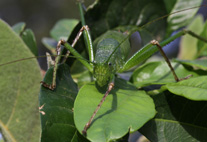Abstract
The study is part of a larger research programme aimed at shedding light on the gastrotrich communities of the subtropical east coast province of KwaZulu-Natal, South Africa. In previous papers, faunistic and preliminary taxonomic data on marine and freshwater gastrotrichs found in the iSimangaliso Wetland Park, were reported. Here two new interesting marine macrodasyidan species in the families Dactylopodolidae and Thaumastodermatidae are described based on observations carried out on living specimens and using differential interference contrast microscopy. The two novel species are named in honor of two great South African icons recently deceased: Nadine Gordimer and Nelson Mandela. Dactylopodola nadine sp. n. is the third species in the genus to bear red eye-spots; it can easily be distinguished from the closely-related red-eyed D. baltica and D. roscovita by its smaller size (Total length = 230 μm vs 275 μm vs 450 μm, respectively) and the lower number of adhesive tubes of the anterior, lateral and posterior series (on each side: 3, 4 and 4 vs 5, 6 and 8 vs 2, 9 and 12–15). Pseudostomella mandela sp. n. is a fairly large species (up to 481 μm in length), with a cuticular covering made up of tetrancres and relatively long caudal pedicles (up to 44 μm in length ). The most evident autoapomorphic trait of the new species is the presence of 7 pairs of ‘cirrata’ tubes, two emerging in a lateral position along the pharyngeal region and five from the dorsolateral sides of the trunk. Additional relevant taxonomic characters include: 4 tubes of the anterior series, 11 tubes of the ventrolateral series and 3 tubes of the posterior series per side, 5 papillae on the dorsal margin and 6 papillae on the ventral margin of the oral palps. The high number of putative new species discovered among the South African gastrotrich fauna during our relatively short survey, highlights the relevance of this region with regard to the diversity of this group and stresses once again the importance of investigating new geographic areas in order to improve our understanding of global gastrotrich biodiversity and species richness.

